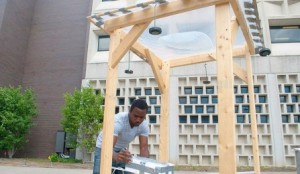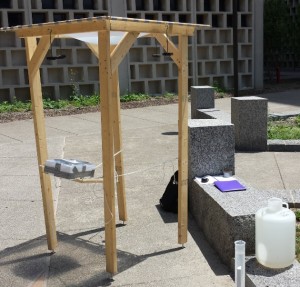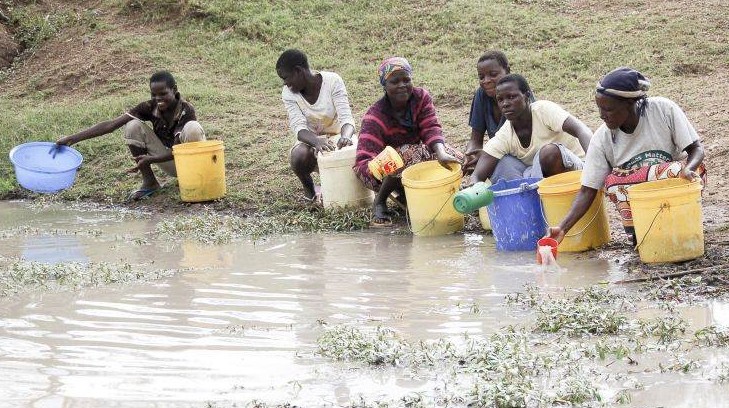With a wood frame, some plastic and water, 99 percent of bacteria can be eliminated from unclean water, using a structure created by University of Buffalo, New York student Deshawn Henry. The project has the potential to provide clean water to developing  nations around the world, where millions currently have no access to clean water for drinking and washing.
nations around the world, where millions currently have no access to clean water for drinking and washing.
“In the best hopes,” Henry told The Speaker, “the water lens could possibly become a savior for hundreds of thousands of people in many developing countries in the world, such as in Africa, Asia, and Latin America. Not only would this development save hundreds of thousands of lives, but it will also give those people a better state of mind, knowing that they can drink the water without fear of contracting most types of water-borne diseases.”
Henry studies at the University of Buffalo‘s Department of Civil, Structural and Environmental Engineering in New York.
The water lens is a six-foot tall structure. At the top of a simple wood frame, a plastic sheet is covered with water, creating the “water lens.” Below the water lens a small container of water is positioned in line with the beam of light focused by the lens.
The water lens can heat a litre of water to between 130 and 150 degrees Fahrenheit in just over an hour. At this temperature, 99 percent of bacteria and other pathogens are killed.
The structure needs only sunlight to work, although due to the sun’s movement the lens needs to be shifted throughout the day.
 When we asked Henry about the potential of the water lens to help those in need of clean water, he spoke of the potential benefits not only for less fortunate regions, but also of shared benefits.
When we asked Henry about the potential of the water lens to help those in need of clean water, he spoke of the potential benefits not only for less fortunate regions, but also of shared benefits.
“I feel that this development does indeed tie America and other nations closer together. I think it’s a very positive thing because it allows us to help others in need who aren’t as fortunate as we are here in the great USA.
“Sharing this type of technology with countries who need this type of phenomenal development is key to strengthening our relationships with the other countries of the world. Everyone on this Earth deserves to able to live their lives with access to good, clean water, and that is just what I hope this project will eventually accomplish.”
Unclean water is a global problem. Over one billion people lack access to clean water. Approximately 3.4 million people die annually from water-related diseases–1,400 children under age five daily.
Read more: WarkaWater Towers to Service Earth’s Desert Hydration Needs
“Millions of people die every year from diseases and pathogens found in unclean water, and they can’t help it because that’s all they have. Either they drink it or they die,” said Henry.
The World Health Organization suggests at least 7.5 litres of water per day to meet minimum human requirements. Additional water is required for basic hygiene and basic food hygiene, and laundry and bathing require additional water as well.
The lens does have some limitations. Some water-borne bacteria are temperature resistant. However, many serious bacteria and other pathogens commonly found in water can be eliminated through boiling, such as E.coli, Vibrio cholera, Shigella flexneri, Salmonella typhii, enteritidis, and paratyphi, and Rotavirus.

The next phase of Henry’s project is to construct a larger version of the current water lens. A lens at least three times the size of the current model would have to be constructed to boil water for a family of five.
“Our next step in the research is to create a bigger lens that can heat more liters of water in the same amount of time it took to heat one liter of water… I wish to continue my research on this project with my mentor hopefully next summer.
“In places like Africa, where there is a lot more sunlight there than here in the US, the previous lens could clean at least 5 liters of water per day on a sunny day. If we can successfully construct a bigger lens that is as efficient as the previous one, we could potentially double or even triple the amount of water treated per day, given that there is good weather when the solar disinfection is taking place.”
By James Haleavy
